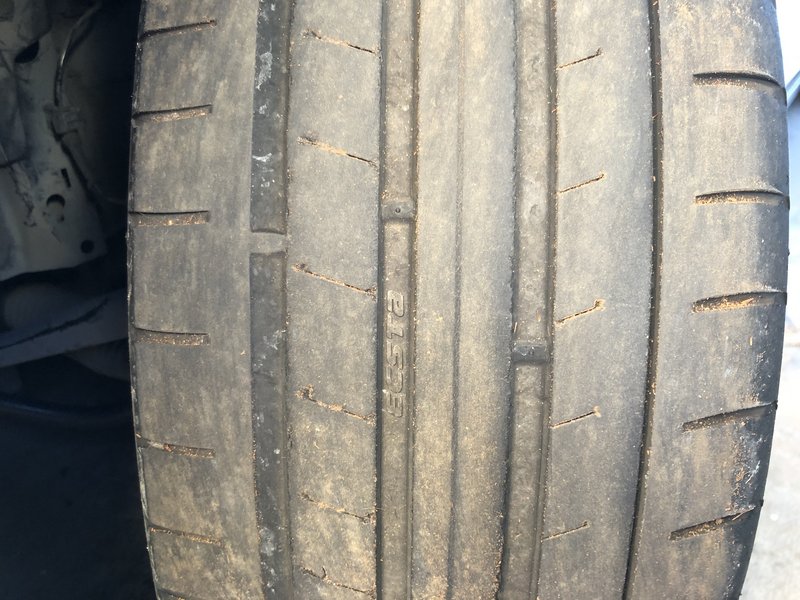Sale ends todayGet 30% off any course (excluding packages)
Ends in --- --- ---
Discussion and questions related to the course Motorsport Wheel Alignment Fundamentals
I was hoping to find an answer in the course but there is no such info.
So I have an excessive thread wear on inner shoulder on front tires on my Camaro SS 2015.
I've aligned the front wheels and set for each side caster 6.3˚, camber -2.3˚ and toe out 0.05˚.
As a result I decreased understeer and increased cornering speed. But I got significantly higher thread wear on the inner shoulder on front tires.
As for the temperature it is only 2˚F higher on the inner side than on the center and outer side.
So the question: How should I change the toe, how far and more in or more out to prevent such excessive inner side wear? Preserving the camber. Which is not so aggressive at all.
This is just my opinion, maybe the track has many long straights that lead to inner wear? You have better contact patch during corners but the neg camber causes the wear during long straight
Here is the track:

I believe it has a bit more corners than straights.
Hi Basil,
Could you give us a bit more detail about what you consider excessive inner edge wear? Is this a car/tyre combo that you only drive on the track, or also the street? If you have any photos of the tyres or tread wear measurements per km that would be ideal, but you may not be recording that sort of information.
Assuming you have an 18 inch wheel, that would be a static toe setting of less than 0.5mm toe out which is almost nothing.
The fact that you've increased cornering speed and feel that the balance is shifted to less understeer means you've certainly made the front tyres work better which is great. Because modern tyres all make more grip with a dynamic negative camber, sometimes this does result in more wear to the inside edge in order to get the most performance out of them, so it's not always a bad thing to have this - apart from getting less milage out of your tyres. Again, it really depends on what you consider excessive.
Tim
This is a street car. I noticed that wear after a month since I did alignment 2000miles ago. And the wear was noticeable but half as significant as now after 135 miles on a track day.

It's as I suspected it would be - your wear is due to the toe out. You have clear evidence in the picture of the characteristic knife and rolled edges on the tread blocks caused by incorrect toe - in this case it's excessive toe - if the sharp and rolled edges were reversed it would be clear excessive toe in.
There is NO universal toe setting, as every vehicle will be different - if the front axle is driven, the Ackerman angles and suspension geometry's affect on it, scrub radius, steering and suspension compliance, camber, caster, KPI, roll or bump steer, whether the steering rack is in front of or behind the axle, how the vehicle is being used, etc, affects the toe setting required.
I'd suggest running a small amount of toe in, 1/16 to an 1/8th, and you should both reduce the wear and potentially gain a small amount of front grip as the tyres will track truer.
Thank you Gord and Tim.
As I understood you suggested to set the Toe In somewhere between 0.2˚-0.4˚ per side. Assuming we are talking about 18in rims.
This is a RWD car. And the factory settings are:
Front: Camber -0.8˚
Caster 6.0˚
Total toe out 0.1˚
Rear Camber -0.3˚
Total toe in 0.2˚
So increasing the negative camber we have to increase the toe in, right?
I had the opposite thoughts. Like when increasing negative camber we need to increase the toe out if it is stock toe in.
But I left the toe unchanged as it was already the toe out.
No prob Basil,
Gord makes some good points here and to summarise everything he said: the toe you set when setting the car up (static toe) will not be the toe you have when the car is on track (dynamic toe), for all the reasons Gord listed.
There is no "rule" that says you must run X toe for Y camber. It's always car and situation-specific.
You can try adding some static toe in, I'd probably start with around 1-2mm toe in per side, which should be ~0.125 -0.25 degree for an 18 inch wheel. I'd make the comment as well that what gives you best tyre life on the road won't necessarily be fastest on track, so you'll have to test this and decide on the compromise for yourself.
Let us know what you learn!
